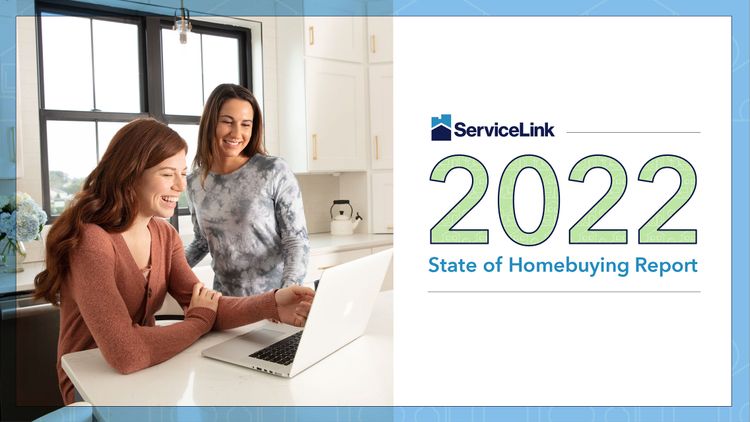Originally published on Forbes.com
Earlier this year, lawmakers in Oregon were the first to ban a practice that's been a popular part of the home-buying experience for many years: so-called buyer "love letters."
Buyers typically use these heartfelt notes to tell sellers more about themselves, but they have been cited by lawmakers as opportunities for potential discrimination. Due to the buyers' ability to divulge information like their race, marital status, religion, sexual orientation, etc. within the letter, the concern is that buyers could be discriminated against based on these factors, which would be a violation of fair housing laws.
Discrimination, in various forms, has been an issue and area of concern within the housing industry for decades. The valuations process, for example, has also been flagged as an area that's vulnerable to bias or discrimination. There have been countless headlines over the years of severe undervaluation for certain groups of people, or valuation discrepancies between homes in white neighborhoods versus those in Black and Hispanic neighborhoods.
While I believe the majority of appraisers don’t lead with this intent there are opportunities for even unconscious bias to influence a property valuation. The good news is technology is advancing rapidly to not only address this issue but help eliminate bias within the valuations process.
How Technology Is Changing The Appraisal Process
An appraisal inspection has typically been a very manual process and not a lot has changed. Generally, a certified appraiser visits the property, takes measurements and notes all amenities and upgrades before submitting their opinion of value based upon their observations and analysis of comparable home sales in the area. This final report is what lenders use as part of the collateral valuation process.
However, newly emerging technology such as "remote inspections" provide not only a high-tech upgrade to this manual process but the ability to help eliminate the potential for conscious or unconscious bias. Remote or virtual inspection technology is widely used in many other industries and has been accelerated by the worldwide pandemic. In some areas of the country, virtual building inspections (VBIs) are helping to keep home construction on track. Similar technology is also being used to diagnose issues in manufacturing plants and to conduct audits and other inspections in healthcare facilities. The benefits of remote technology across all sectors are similar; it provides accuracy and efficiency.
In terms of remote home inspections, the process is relatively simple. Using a smartphone or tablet, the software application walks the user through the process, capturing video of each room in the house. Using geo-fencing, artificial intelligence (AI) and other features, the technology not only records an accurate depiction of the property, but the more advanced applications have built-in privacy filters. These filters can identify and blur out family photos, religious symbols or items that may reveal race, familial status or other potentially discriminatory factors. This entire process only takes minutes and the borrower can do it themselves. The data is then securely sent to the lender or an appraiser for verification and a final valuation.
With this technology, the valuation is determined using the information collected via video, and without any regard to the race of the person who owns the home, their religious affiliation, sexual orientation, etc. Additionally, it has the potential to help free up appraisers (whose numbers continue to dwindle), as they don't need to visit the property and can instead use the submitted data to determine the valuation from their office.
What's Next For Appraisal Technology
Right now, these remote inspection tools are only scratching the surface of what's possible. They're currently being utilized in cases where a traditional appraisal inspection is not required, like for home equity lending and portfolio management processes.
Due to the push to infuse tech solutions into the valuations process, Government Sponsored Enterprises (GSEs) have been in conversations, which I have been a part of, about and reviewing third-party inspections for broader use. The GSEs have yet to universally approve them for loans backed by Fannie Mae and Freddie Mac; however, they have recently approved the use of desktop appraisals that are developed using third-party information to potentially include data collected via remote inspection technology. This is a big step in the right direction, and I’m hopeful that we could begin to see a wider range of valuations being completed using third-party inspection methods as early as the end of this year.
In the meantime, here's how fintech leaders can make progress in bringing these tools to market:
1. Work closely with the GSEs.
This step is key. Tech leaders need to meet frequently with the GSEs to make sure they are aligned on the direction of this technology. They should not only educate the GSEs on the advantages associated with such innovation (speed, accuracy and bias elimination) but openly discuss any potential gaps in the technology.
2. Report the results.
Tech leaders need to continually provide results. They should report on the challenges and successes of implementing this technology, particularly comparing remote inspections to the traditional on-site appraisal inspections to determine any discrepancies in valuations.
3. Address criticism directly.
There is some concern that appraisers or decision-makers will not have an accurate representation without personally visiting the home or that the user could avoid problem areas when capturing its features. While both of these are valid, tech leaders must address the concerns and then adapt the technology.
As with any new tool, there are bound to be bumps in the road. However, at some point, we have to trust the technology. The valuation process is ripe for innovation. As we work to modernize the home-buying process as a whole and ensure fairness across the board, I believe remote inspections will soon become more mainstream. Not only do they increase efficiency and time savings, but they have the ability to reduce problems that have plagued the housing industry for decades.


